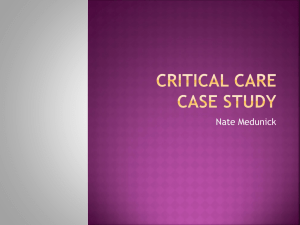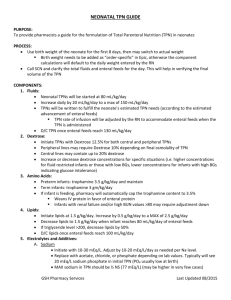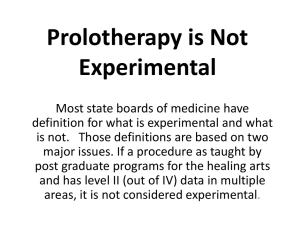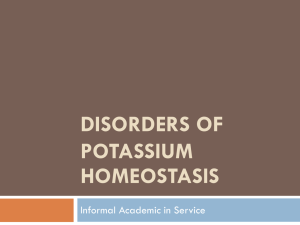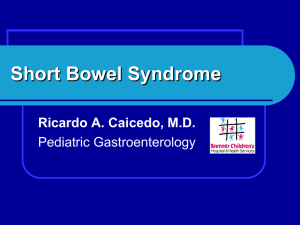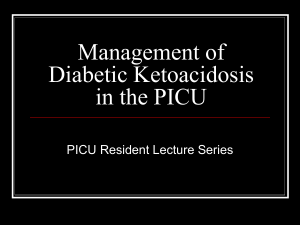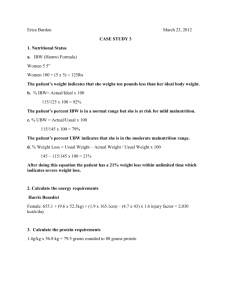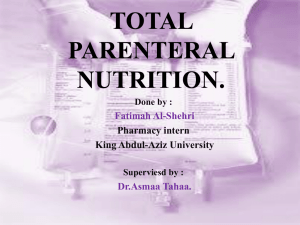math pharm
advertisement
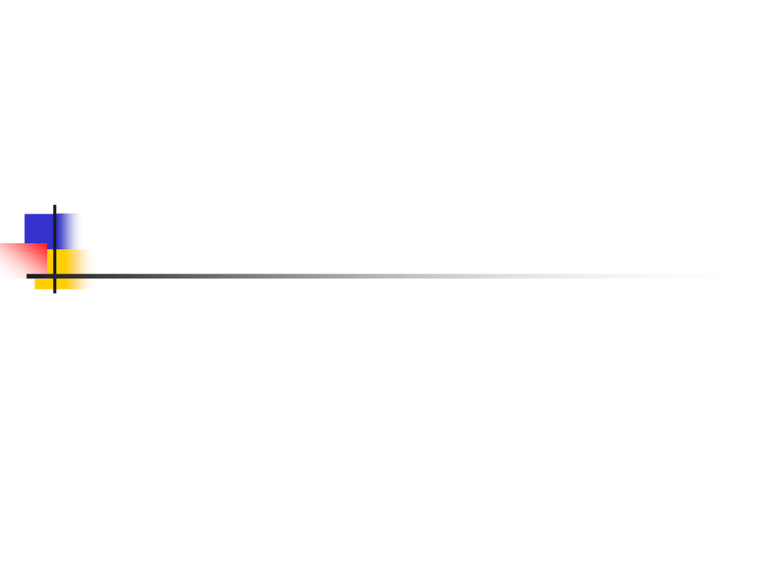
Percents and Solutions Percents in Pharmacy help us determine the concentration of a solution. What is concentration? Concentration “the strength of a solution as measured by the weight-to-volume or volume to volume of the substance being measured” Percents In pharmacy this is indicated in the following ways: Weight to volume is: grams per 100 mL Volume to volume is: mL per 100 mL For example If you have a solution of 50% dextrose in a 1000 ml IV bag, how many grams of dextrose are there in a bag? You can solve this by developing a proportion equation. Since 50% dextrose means there are 50gms of dextrose in 100ml the equation would be: X g divided by 100 ml = 50 g divided by 100 ml You could also. . . Convert the percent to a decimal. In a solution of 50% dextrose, there are .5 g of dextrose per ml: 50 g/100 ml = 0.5 g/ml You can then multiply 0.5g by the total number of milliliters. X=0.5 g times 1000= 500 g Now. . . Using the same bag of Dextrose, How many ml will give you 10 gm of Dextrose? 20 ml- WHY? Well. . . The proportion equation is. . . X ml/10 g = 100 ml/50g Solve for X Practice Problems- Percents You have a 70% dextrose solution. How many grams in: 50 ml of solution=______ 75 ml of solution=______ 20 ml of solution=______ You have a 50% dextrose solution, how many ml will give you: 25 g of dextrose = _______ 35 g of dextrose = _______ 10 g of dextrose =________ Answers 1. 2. 3. 4. 5. 6. 35 gms 52.5 gms 14 gms 50ml 70 ml 20 ml Percents You have a liquid that contains 12 mg/10ml. What percent is this liquid? Percents In pharmacy this is indicated in the following ways: Weight to volume is: grams per 100 mL Volume to volume is: mL per 100 mL Remember that 1 gram = how many milliters? 1 gm= 1000 mg so . . . 0.012gm = 12 mg Right? Which means the same concentration has 0.012 gm/10 mL But you need to find the percent and the percent needs to be by 100 mL Right? You can multiply the ratio by 10 and then you have: 0.12gm/100 mL Which would translate to 0.12% solution or liquid. Percents and Solutions The Physician wants a 35 % solution of dextrose 1000 mL. You have a 50% solution of dextrose 1000 mL. How will you make up what the physician wants? Percents- TPN This is common when administering TPN (Total Parenteral Nutrition) to patients. (TPN is when you can give patients all of their nutrition needs through an IV or central line). You would have = x volume needed/ want %= volume Prescribed/ Have % TPN problem So . . . Volume needed = x ml Want % = 35 % dextrose Volume Prescribed = 1000 ml Have % = 50% So the formula here is – Xml/35%= 1000ml/50% (solve for x) TPN problem Which would mean 700 ml of dextrose 50% will give me the 350 g of dextrose I will need in my solution. Howeverthe doctor ordered 35% in 1000 mL what do I do? TPN You will still need to add sterile water qs ad until you have a total solution of 1000 mL as ordered by the physician. Milliequivalents: mEq Electrolytes are substances that conduct electrical currents and are found in the body’s blood, tissue fluids, and cells. Some common electrolytes: NaCl= Sodium Chloride MgSO4= Magnesium Sulfate KCl= Potassium Chloride K Acetate= Potassium Acetate Ca Gluconate= Calcium gluconate Na Acetate= Sodium Acetate mEq Concentrations of Electrolytes are shown as milliequivalents (mEq) per mL or mEq per L. A mEq cannot be converted into the metric system. A 0.9% solution of one electrolyte will have a different mEq value than a 0.9% solution of another because mEq values are different for different electrolytes. Why are they different? mEq are based on each electrolytes atomic weight and electron properties known as valence (the number of positive or negative charges on an ion). Example A solution calls for 5mEq of Na that you have in a 1.04mEq/ml solution of NaCl. How many ml of it do you need? What do you do? Talk in your groups and see who can get the answer. Answer 4.8 mL, Why? Common Saline Solutions 0.9% NaCl 0.45% 0.2% 3% Example TPN A TPN order calls for the amounts on the left (including additives) to be made from the items on the right on the next slide. The total volume is to be 1000mL. How much of each ingredient do ou need to prepare this TPN? TPN Example TPN order Aminosyn 4.25% Dextrose 25% On hand Aminosyn 8.5% 1000ml Dextrose 70% 1000mL Additives: KCl 20 mEq MVI 10 ml NaCl 24 mEq KCl 2mEq/10ml MVI 10 mL NaCl 4.4mEq/ml 20 ml We have to figure out each one individually first Aminosyn- Using the Percent solutions Formula of volume wanted and volume neededXml/4.25%=1000ml/8.5% Which equals= 500ml of aminosyn 8.5% is needed. Dextrose Using the percent Solutions Formula: Xml/25% =1000/70% (x volume needed)/(want %) = (Volume prescribed)/(have %) 357 mL of dextrose 70% is needed KCl Use a proportion equationxml/20mEq = 1ml/2mEq 10 ml KCl are needed MVI You need 10 ml of MVI and you have 10 Ml of MVI so you add the 10 ml of MVI. NaCl Use a proportion equation: Xml/24 mEq = 1 ml/4.4 mEq 5.45 ml of NaCl is needed Sterile Water Add qs ad for volume of 1000 ml Water needed = 1000 ml minus all other ingredients Aminosyn 500 ml Dextrose 357 mL KCl 10 ml MVI 10ml Na Cl 5.45 ml TOTAL= 882.45 ml Sterile Water 1000- 882.45= 117.55 ml of sterile water Percents and Solutions A TPN order calls for the amounts on the left (including additives) to be made from the items on the right. The total volume is to be 250 ml. How much of each ingredient do you need to prepare this TPN?
